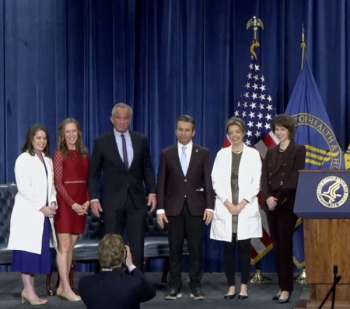
Diabetes accounts for majority of U.S. healthcare spending
Of 155 conditions, personal healthcare spending on diabetes tops list, according to new study.
Spending on healthcare in the United States, both personal and public, has increased substantially from 1996 to 2013, according to the results of a study published recently in the Journal of the American Medical Association. Of spending for 155 conditions looked at in the study, diabetes had the highest healthcare costs in 2013.
“We know that the U.S. spends more than any other country in the world on healthcare, but previously there hasn’t been a comprehensive breakdown of spending by condition, age and sex group, and type of care,” study author Joseph L. Dieleman, PhD, of the Institute for Health Metrics and Evaluation at the University of Washington, told Medical Economics. “It is important to know how and where this money is being spent, and the insights provided in our study may have implications for efforts to control healthcare spending through better policies and tailored interventions.”
Dieleman and colleagues looked at government budgets, insurance claims, facility surveys, household surveys and official U.S. records from 1996 to 2013 to estimate spending for 155 conditions.
From 1996 to 2013, $30.1 trillion was spent on personal healthcare to treat the 155 conditions looked at. Personal healthcare spending increased for 143 of 155 of the conditions. In 2013, the top 20 conditions accounted for about 57.6% of personal healthcare spending, totaling $1.2 trillion.
Of the conditions, diabetes had the highest healthcare spending in 2013, totaling an estimated $101.4 billion. Of diabetes spending, 57.6% was spent on pharmaceuticals and 23.5% was spent on ambulatory care.
“What is alarming about diabetes is the rate at which spending has grown, which is about 6.5% per year on average,” Dieleman said. “While the sheer amount of money that is spent on diabetes is indeed shocking, we know that the burden of diabetes has been increasing in the U.S. over the years alongside rising rates of obesity and other diabetes-related risk factors. So in this way, it isn’t that surprising that spending has for diabetes has also increased.”
The second-highest amount of spending was on ischemic heart disease, estimated to be about $88.1 billion. However, Dieleman pointed out that that was essentially the same amount of spending in 1996 as there was in 2013, meaning there was very little growth, likely because of improvements in treatment and prevention.
“This information can be used to identify where new technologies and processes could be applied to help cut back on costs while still seeing the greatest return on investment,” Dieleman said. “In addition to the clinical implications of these findings, understanding how healthcare spending varies may help health system researchers and policymakers identify which health conditions, age and sex groups and types of care are driving spending increases.”
Newsletter
Stay informed and empowered with Medical Economics enewsletter, delivering expert insights, financial strategies, practice management tips and technology trends — tailored for today’s physicians.


















